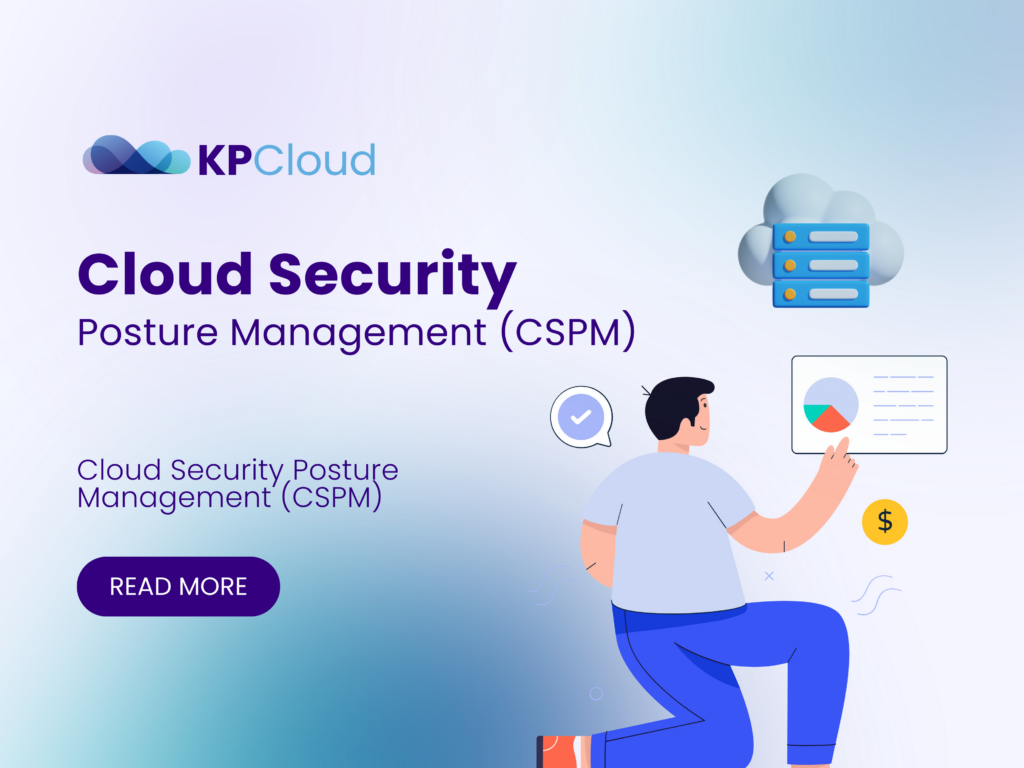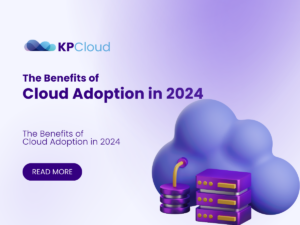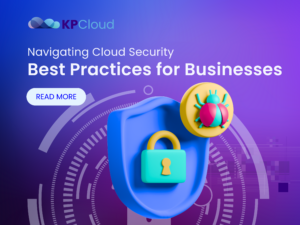Introduction
Cloud security posture management (CSPM) refers to the processes and tools used to secure cloud-based infrastructure and workloads. CSPM solutions continuously monitor and manage security configurations and compliance in Infrastructure-as-a-Service (IaaS), Software-as-a-Service (SaaS), and Platform-as-a-Service (PaaS) environments.
CSPM is important for securing modern enterprise cloud environments for several key reasons:
- Preventing misconfigurations: According to Gartner, around 95% of cloud security failures result from misconfigurations and human error. CSPM tools automatically detect and remediate risky configurations across cloud platforms and services to prevent exposure.
- Maintaining compliance: Enterprises are bound by various regulations like HIPAA, PCI DSS, and GDPR when handling sensitive data in the cloud. CSPM enables continuous compliance monitoring, auditing, and reporting to prove adherence.
- Improving visibility: The dynamic nature of cloud infrastructure coupled with rapid growth makes achieving comprehensive visibility into security posture difficult. CSPM correlates configurations, users, data, and threats across domains for unified visibility.
- Enabling automation: With increasingly complex and distributed cloud usage, relying solely on manual security management is unrealistic. CSPM allows policy-based automated assessment and remediation of cloud environments.
- Integrating security into DevOps: By integrating security checks into CI/CD pipelines, CSPM solutions enable DevSecOps, wherein security is shifted left and built into development workflows.
The core capabilities offered by CSPM platforms include:
- Discovering cloud resources and maintaining updated inventories
- Evaluating configurations against benchmark policies and compliance frameworks
- Detecting drift from secure configurations and violations of standards
- Providing actionable insights into risks from misconfigurations
- Enabling quick remediation of issues through one-click or automated actions
- Continuously monitoring environments for new resources, changes, and threats
Implementing robust CSPM is thus crucial for securing complex, distributed, and dynamic cloud environments. It empowers enterprises to take a proactive approach toward cloud security through posture visibility, compliance enablement, misconfiguration prevention, and risk mitigation.
Key Benefits of CSPM
The key benefits of cloud security posture management (CSPM):
- Improved visibility into cloud environments: CSPM tools provide a centralized view of an organization’s entire cloud security posture across different cloud platforms and accounts. This unified visibility allows security teams to identify blindspots and get an accurate inventory of cloud resources.
- Automated identification and remediation of misconfigurations: CSPM scanning detects misconfigured resources that violate security best practices or compliance policies. Advanced CSPM solutions can automatically remediate simple misconfigs, while generating detailed instructions to fix complex ones. This reduces the risk window for exploits.
- Continuous compliance monitoring: By continuously monitoring for drift from compliance benchmarks like PCI DSS, HIPAA, etc., a CSPM enables organizations to maintain consistent compliance. It also facilitates audits through out-of-the-box compliance reports.
- Integration with DevOps workflows: Integrating CSPM checks into CI/CD pipelines allows organizations to embed security within DevOps. This DevSecOps approach shifts security left, eliminating misconfigs before production deployment.
CSPM is essential for governing cloud security by increasing visibility, reducing errors, sustaining compliance, and integrating with agile development – key organizational imperatives. Implementing a robust CSPM solution is crucial for securing the cloud.
How CSPM Works
An effective cloud security posture management solution works through four core functions – discovery and visibility, misconfiguration management, continuous threat monitoring, and integration with adjacent security systems like SIEM and DevOps tools.
- Discovery and Visibility: CSPM tools continuously discover assets across cloud environments and maintain always-updated inventories. By connecting to cloud platforms via APIs, a CSPM scans infrastructure such as virtual machines, serverless functions, containers, storage services etc. It collects configuration data, metadata, security policies, permissions, network topology and more to enable comprehensive visibility. A good CSPM provides a single pane of glass for security teams to visualize their entire cloud attack surface security posture.
- Misconfiguration Management: CSPM matches collected configuration data from the discovery phase against predefined policy benchmarks like CIS Controls or best practice frameworks. This allows it to accurately detect any deviation from secure configurations across IaaS and PaaS environments. For example, a storage bucket policy misconfigured to allow public access would be flagged by the CSPM tool. Sophisticated solutions also provide detailed guided remediation advice alongside findings to enable quick fixes. Auto-remediation features further reduce response times by directly rolling back insecure settings on the organization’s behalf.
- Continuous Threat Monitoring: Modern CSPM functionalities go beyond just compliance checks to also incorporate real-time threat monitoring capabilities. By analyzing patterns, workloads and user behavior, a CSPM can detect anomalies indicative of potential threats and malicious activities such as compromised credentials misuse, cryptojacking attacks etc. SecOps teams can leverage threat intelligence powered by big data and machine learning to enable rapid incident response.
- Integration with SIEM and DevOps: For unified visibility and efficient workflows, CSPMs integrate with other security (SIEM) and operations (DevOps) systems. Syncing with a SIEM collates CSPM findings with other threat feeds for better risk analysis, alerts prioritization and incident investigation. Integration with DevOps toolchain allows CSPM policy checks to become a part of the CI/CD pipeline for shift-left security. This embeds security earlier into application development lifecycles.
Advanced cloud-native CSPM platforms offer comprehensive visibility, robust misconfiguration and threat management, along with integration capabilities to secure modern enterprise cloud environments.
Key Capabilities of CSPM
CSPM platforms offer several crucial capabilities to secure the cloud for modern enterprises, including:
- Configuration Evaluation at Multiple Layers:
CSPM tools assess configuration risks across cloud infrastructures at multiple levels – the cloud platform layer, application architecture layer, and compute host layer. By evaluating the security stance across these layers, CSPM takes a more holistic approach towards identifying gaps.
For instance, a CSPM would scan the virtual machine security group policies, storage access permissions, and server-level authentication protocols. This expansive coverage ensures vulnerabilities that arise from resource, service, and host-level misconfigurations are discovered.
- Continuous Cloud Compliance Governance:
With dynamic cloud usage and frequent regulatory updates, sustaining compliance is challenging through periodic auditing alone. CSPM allows continuous governance of cloud compliance for frameworks like PCI DSS, HIPAA, SOC2 across hybrid and multi-cloud environments.
Built-in policies mapped to major regulations facilitate audits and reduce manual effort for compliance teams. Automatic monitoring detects drift from compliant configurations so issues can be addressed before an audit. This prevents failing audits and penalties resulting from outdated cloud security controls.
- Agentless Workload Scanning:
CSPM tools perform agentless scanning of workloads like containers, serverless functions, VMs across cloud environments. Unlike agent-based scanning, this non-invasive method eliminates resource usage and scalability challenges in assessing security of cloud workloads.
With support for diverse workload types, CSPM can identify risks arising from misconfigured OS, applications, libraries etc. across an organization’s cloud footprint.
- Contextual Risk Assessment:
Modern CSPM platforms provide contextual prioritization of the risks uncovered during evaluations. Collating risks with threat intelligence, CSPM analyzes the business impact of vulnerabilities to accurately establish severity. For instance, a misconfigured storage bucket exposed to the internet would be deemed highly critical.
This context allows CSPM users to filter through the noise and focus response efforts on issues posing real danger of breach or disruption. The contextual insights help strengthen the overall security posture.
In essence, CSPM solutions offer well-rounded capabilities spanning multiple configuration layers, compliance requirements, diverse workloads, and risk contexts. This extensive coverage is crucial for securing today’s enterprise cloud environments.
CSPM vs CIEM
While CSPM manages the security posture of cloud infrastructure and services, Cloud Infrastructure Entitlement Management (CIEM) focuses specifically on managing identities, their access, and ensuring least-privilege permissions to cloud resources.
CSPM vs CWPP
Cloud Workload Protection Platforms (CWPP) secure workloads like containers and serverless functions against threats. CSPM takes a broader approach by assessing overall cloud environments for risks arising from misconfigurations.
CSPM vs CASB
Cloud Access Security Brokers (CASB) act as policy enforcement points between cloud providers and clients. CASBs offer user authentication, malware detection etc. whereas CSPM specializes in cloud configuration assessments and compliance governance.
CSPM vs Network Security
While network security solutions protect cloud traffic and endpoints, CSPM explicitly focuses on evaluating cloud resource configurations for security standard compliance and to identify gaps.
While CSPM overlaps with other cloud security technologies, its differentiation lies in taking a configuration-centric approach to secure cloud platforms, infrastructure and services through assessments, compliance and hardening
Implementing an Effective CSPM Strategy
Implementing a robust CSPM strategy is crucial for organizations embracing cloud platforms. It entails:
- Assessing Existing Cloud Environment: The first step is gathering insight into existing cloud infrastructure – the services, tools, configurations, instance types deployed, data assets, and more. This inventory mapping establishes the attack surface and risk baseline. It also uncovers shadow IT unknowns.
- Defining Security Policies and Compliance Requirements: Next, organizations define tailored policies aligned with industry standards like CIS Benchmarks, NIST, or PCI DSS based on their regulatory landscape and business function. These policies and security controls become the benchmark for CSPM monitoring. Compliance teams also establish frameworks for continuous governance.
- Setting Up Continuous Automated Scanning: At its core, CSPM solutions continuously monitor environments against predefined policies using API integrations. Automated scans run periodically to detect drifts or new risks like unauthorized changes, improper access privileges, and new instances spun without hardening. Scanning in a CI/CD pipeline allows catching issues earlier.
- Integrating with DevOps Release Pipelines: Embedding security checks within existing agile workflows instead of being an independent gatekeeper is vital for CSPM success. Integration empowers developers to self-remediate simple issues. It also shifts security left in alignment with DevSecOps philosophy.
- Prioritizing and Remediating Risks: With volumes of assessment data, tracked risks must be intelligently prioritized based on criticality using contextual analytics. Teams can then remediate starting from the highest severity gaps first. Automated remediation resolves simple misconfigurations while analysts handle complex threats.
- Continuously Auditing and Improving Policies: With dynamic cloud environments, one-and-done policy definitions are ineffective. Regular audits help evaluate changing infrastructure landscapes, new compliance needs, and emerging threats to refine benchmarks continuously.
Through these six core components of discovery, policy definition, scanning, integration, remediation and auditing – enterprises can implement a pragmatic CSPM strategy that secures cloud deployments.
Conclusion
In summary, cloud security posture management (CSPM) offers indispensable capabilities for securing organizations’ ever-expanding cloud environments. CSPM continuously manages and monitors the security configurations of cloud platforms and workloads through their lifecycle. The core value propositions of CSPM include providing comprehensive visibility across hybrid and multi-cloud installations to create a single source of truth. This is achieved through automated discovery of cloud assets and services combined with up-to-date mapping of the attack surface topology. CSPM solutions also enable preventive security by detecting misconfigurations that create exploitable vulnerabilities early, and facilitating quick remediation before adversaries can capitalize on oversights. Auto-remediation features address simple issues without delay or dependency on scarce security professionals. Additionally, with pre-built frameworks aligned to industry standards and regulations, CSPM simplifies cloud compliance governance through continuous controls auditing and reporting. The integration capabilities also empower aligning security with DevOps velocity. As cloud adoption continues accelerating while talent shortage and threats loom, the capabilities offered by CSPM will be pivotal for organizations to secure cloud-based digital initiatives. CSPM’s automated and continuous posture assessments and compliance monitoring comprehensively address the shared responsibility model for cloud security. In essence, a robust cloud security strategy is incomplete without the inclusion of a CSPM solution for preventing breaches, sustaining compliance, and integrating security across cloud environments.


